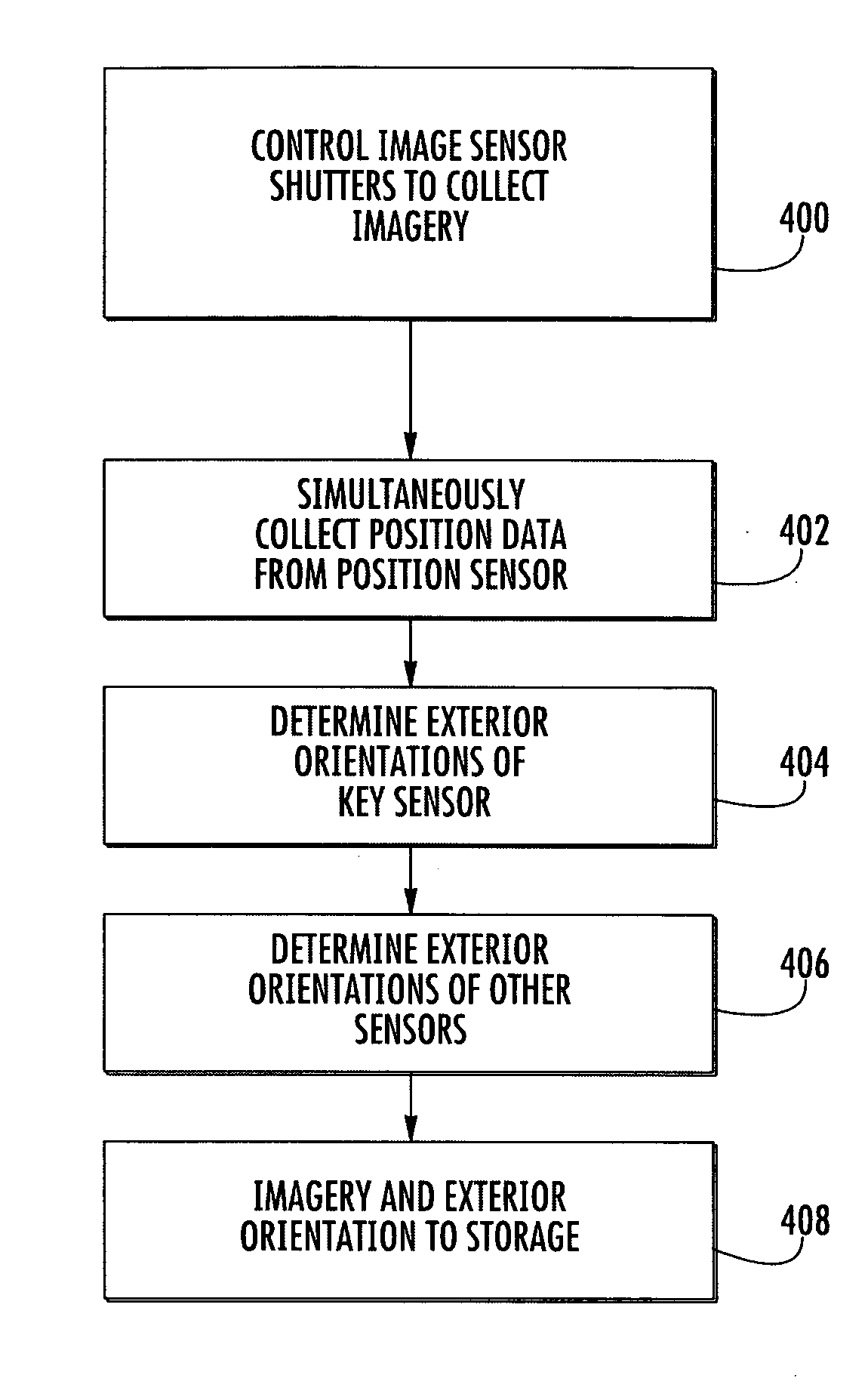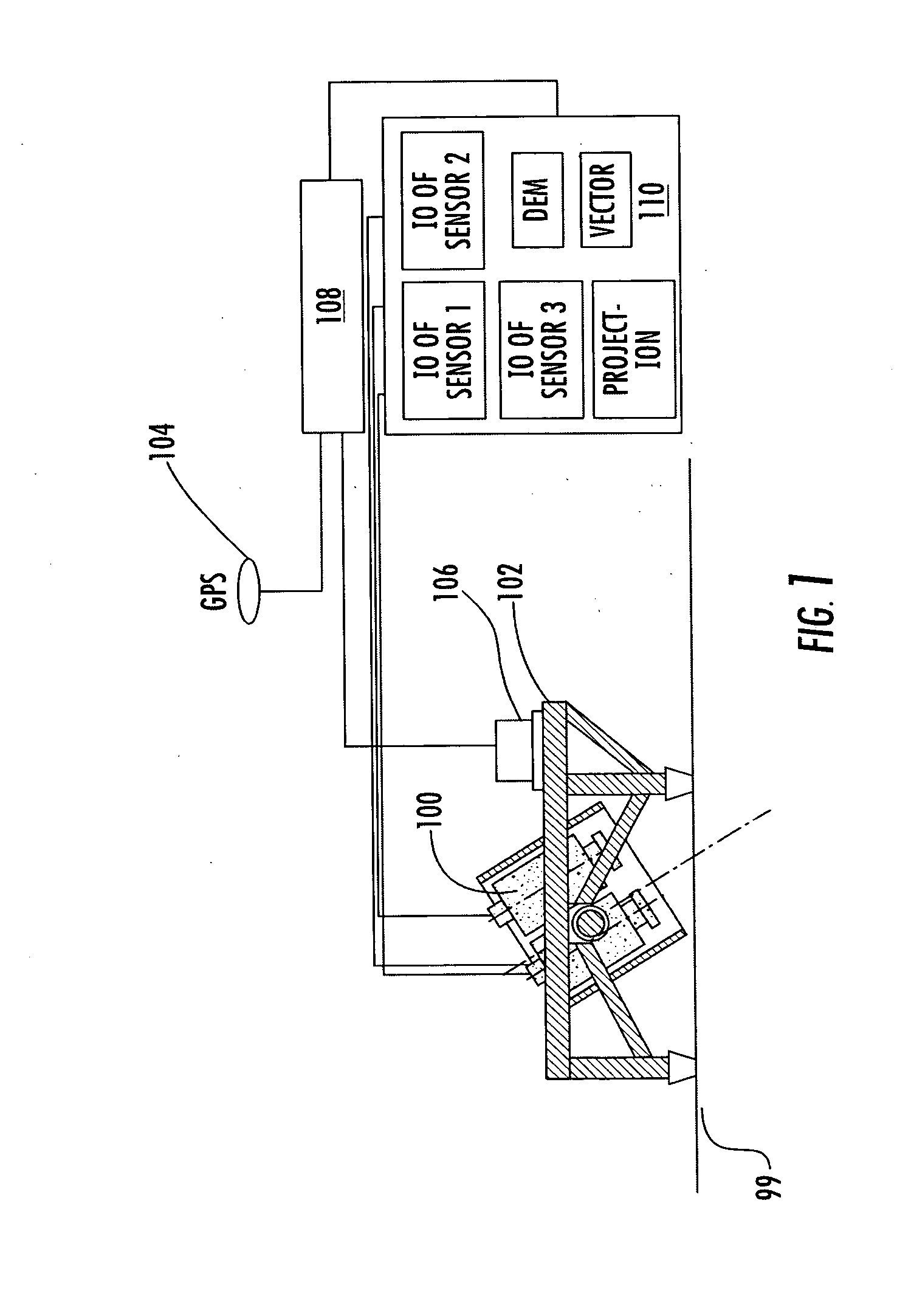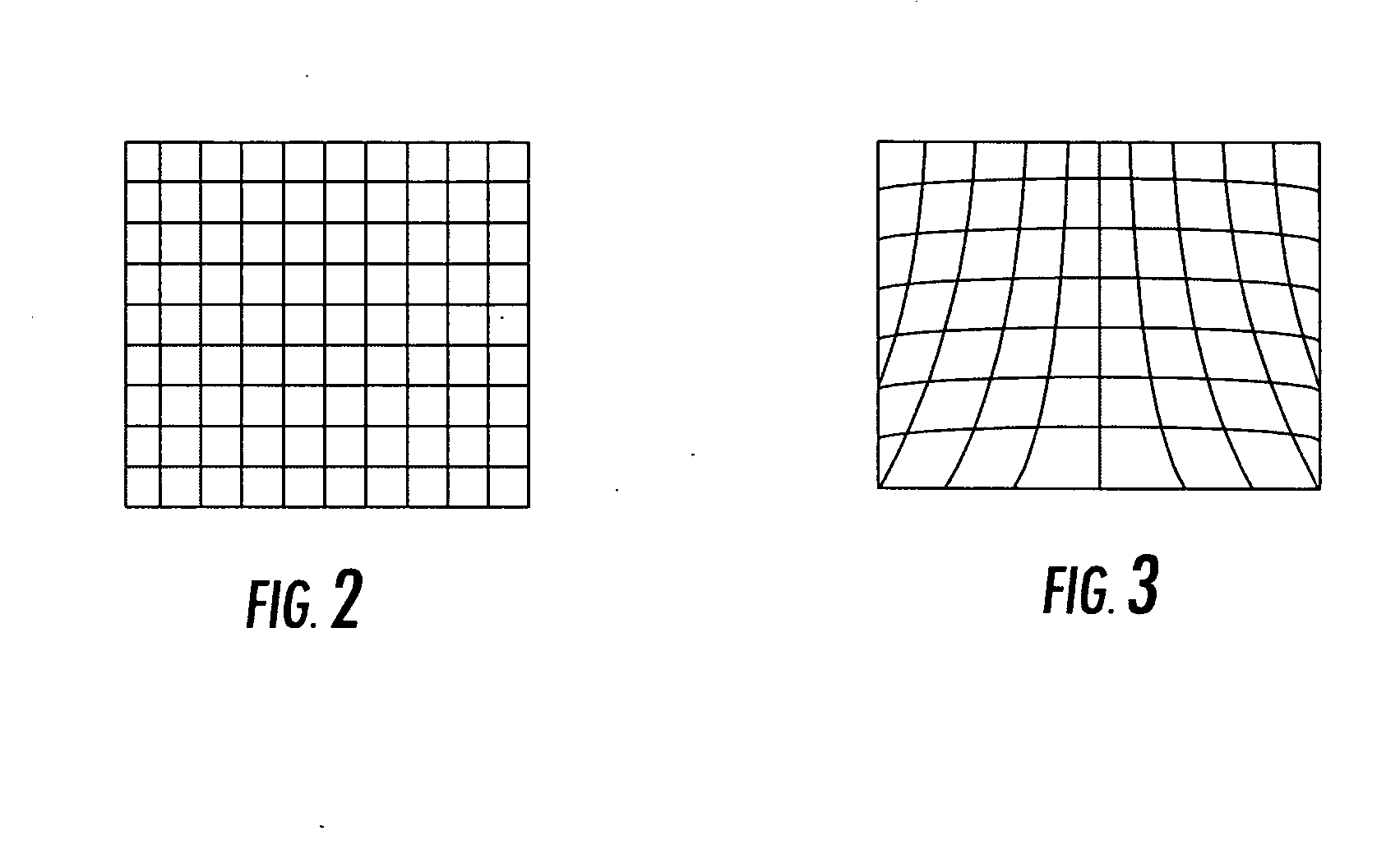Remote sensing system capable of coregistering data from sensors potentially having unique perspectives
a remote sensing and data technology, applied in scene recognition, instruments, optics, etc., can solve the problems of deteriorating image position accuracy, distortion of lens, and objects in the image appearing closer or further from each other than they really ar
- Summary
- Abstract
- Description
- Claims
- Application Information
AI Technical Summary
Benefits of technology
Problems solved by technology
Method used
Image
Examples
Embodiment Construction
[0019] As shown in FIG. 1, the aerial mapping system of the preferred embodiment includes an aircraft 99 carrying a plurality of image sensors 100 and processing equipment. The plurality of image sensors 100 are mounted on a platform or frame 102 that is in turn mounted to the aircraft. Each of the sensors could be produced by different manufacturers and be designed to collect light from the same or various bands in the electromagnetic spectrum such as infrared, ultraviolet, visible-light, and other bands of electromagnetic wavelengths. In addition, each sensor could have the same or a different footprint on the ground from the other sensors, although the sensors are preferably fixed in the aircraft in such a way that 60 to 80% of the footprints overlap during a flight (even if the distance between the ground and the aircraft during the flight varies to some extent). In addition to having different footprints, each sensor may have unique interior orientation parameters owing to its ...
PUM
 Login to View More
Login to View More Abstract
Description
Claims
Application Information
 Login to View More
Login to View More - R&D
- Intellectual Property
- Life Sciences
- Materials
- Tech Scout
- Unparalleled Data Quality
- Higher Quality Content
- 60% Fewer Hallucinations
Browse by: Latest US Patents, China's latest patents, Technical Efficacy Thesaurus, Application Domain, Technology Topic, Popular Technical Reports.
© 2025 PatSnap. All rights reserved.Legal|Privacy policy|Modern Slavery Act Transparency Statement|Sitemap|About US| Contact US: help@patsnap.com



